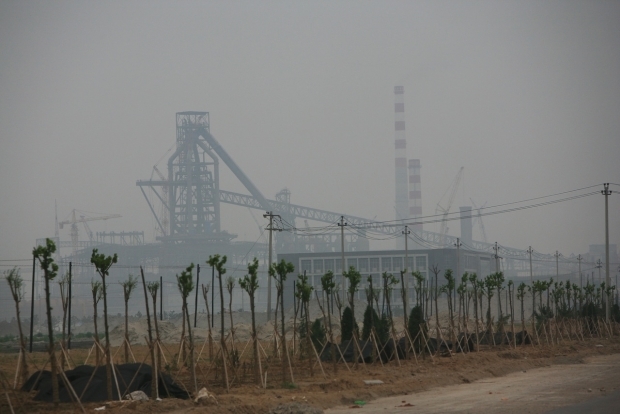The recent announcement of plans to lower air pollution levels in the next five years are far greater than any proposed before, some being several times tougher than those included in the Twelfth Five Year Plan (FYP) period, which was only finalized in 2012.
However, while Beijing is confident of meeting the new coal reduction targets, there is a tug-of-war underway between central and provincial governments.
One source close to the Ministry of Environmental Protection (MEP) said that the new plans would see provincial capitals given an air particulate matter (PM2.5) target 5%-10% tougher than the province itself.
“During discussions,” said the source, “central government asked Beijing to cut 2017 coal use by 10 million tons on 2012 levels— to about 13 million tons per year. Beijing actually said it would try to do better and cut coal use to 10 million tons per year.”
Beijing started controlling coal use in 2011, and in 2012 said that it would aim to cut consumption to 15 million tons a year, compared to the 20 million tons goal in its Twelfth FYP.
Beijing can afford to be confident. It has four pipelines from Shaanxi to ensure Beijingers have access to natural gas from the Northwest, supplying both energy and winter heat. The city also has some of the toughest standards in China for vehicle efficiency and fuel cleanliness. And after years of efforts, Beijing has relocated its power-hungry industries and mostly replaced coal use with natural gas.
But despite all this, Beijing has an increasing number of vehicles on the road and is located in a heavily polluted part of China. In early 2013, the city was still smothered in smog.
Haggling with the Neighbors
While Beijing is keen to see its neighbors clean up their act, they have their own troubles.
The MEP gave a plan for dealing with air pollution in Hebei to the provincial government for comment. By 2017, the province was to have reduced coal consumption by 100 million tons (of raw coal) on 2010 levels.
According to Hebei statistics, in 2010 coal consumption was the equivalent of 350 million tons of raw coal. A reduction of 100 million tons would take it back to 2005, when consumption was about 256 million tons. But in 2012 Hebei got through almost 400 million tons, at 389 million.
The provincial government wrote to the MEP, requesting that given the province’s economic circumstances it be allowed to cut consumption by only 25 million tons of standard coal, or about 35 million tons of raw coal. That would put consumption in 2017 at about 315 million tons.
Even that goes further than the provincial environmental authority’s own plans for dealing with atmospheric pollution, which would have seen 2017 coal use at about 349 million tons.
In Beijing the service sector accounts for 76% of total GDP (as of 2012), but elsewhere in Northern China the scene is typical of an industrializing country: the economy and employment rely on metal work, machinery, construction materials, and smelting.
Hebei is a major steel-producer, with China’s second-largest reserves of iron ore. Since the turn of the century, it has led the nation in the production of pig iron and steel, as well as in related economic indices, with years of 30%-plus growth. The proportion of the provincial economy accounted for by the steel industry has risen consistently since dipping below 15% during the mid and late ’90s, and has now reached about 50%. In 2003, the sector was directly employing 300,000 people in Hebei, and more than one million in the entire industrial chain.
Hebei has always relied on heavy industries such as steel, textiles, and power generation. For a decade, coal has accounted for 90% of energy consumption. So it was no surprise that when the MEP published a report on air pollution, the average number of days on which air quality was up to standard in Beijing, Tianjin, and Hebei was 32% below the national average, while the number of heavily polluted days was 6.5% higher.
In March 2013, the MEP found 60% of companies operating in Hebei had some kind of environmental problem, and 80% of waste water from businesses was not being released in accordance with regulations. Two companies in the county of Wenan, bordering Beijing, were punished as an example. Subsequently, the county head was removed from his post, while the head of the development and reform committee in Langfang, the local city, and others were punished.
A restructuring plan for the provincial steel industry will see production fall from 286 million tons a year to 200 million tons over the coming five to eight years. And, according to reports so far, the central government has asked Tianjin to cut coal consumption by 10 million tons, and Shandong by 20 million tons, on 2012 levels. That means by 2017 Shandong will be using 80 million tons less per year than originally planned.
Even if things are only moving in one direction, observers expect the back-and-forth tussle between central and provincial governments to continue, especially when jobs are at stake.
“If supervision gets tougher and we continue to stick to the traditional method of closing down polluters, the social costs will be higher,” said Yang Zhaofei, formerly Chief Engineer at the MEP.




